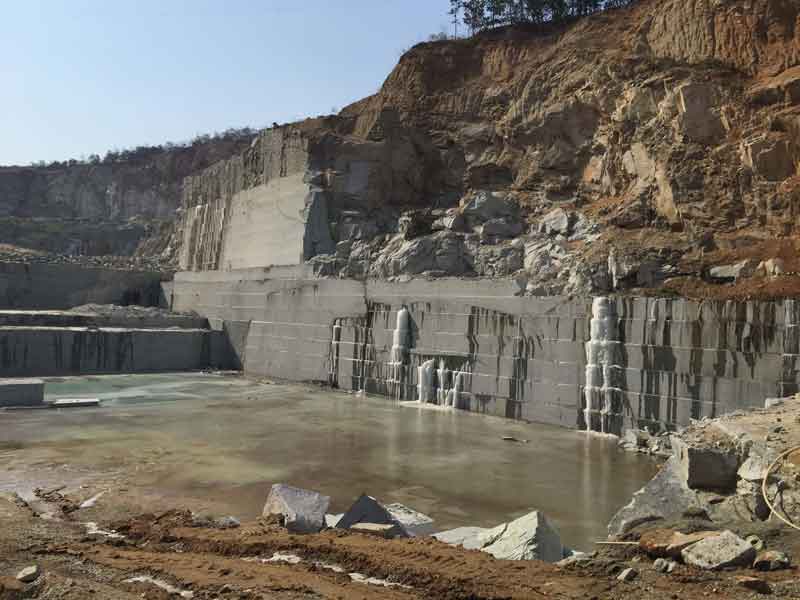Opening Natural Treasures: Granite Quarries in South Africa Unveiled
Opening Natural Treasures: Granite Quarries in South Africa Unveiled
Blog Article
Discovering the Rich History and Lasting Practices of Granite Quarrying
As we stand on the precipice of revealing the elaborate tapestry of granite quarrying, a trip via time exposes not simply the physical act of removing rock yet additionally the social and historic relevance woven right into the really material of this technique. From the old beginnings that laid the foundation for modern quarrying methods to the lasting methods that are shaping the future of this industry, each carve mark on granite surfaces tells a tale waiting to be discovered (granite quarries in south africa). The tradition of granite quarrying stretches far past plain extraction; it is a testament to human resourcefulness, strength, and the long-lasting appeal of this majestic rock
Old Beginnings of Granite Quarrying
Going back to ancient people, the method of quarrying granite has been an indispensable part of human background and building innovation. The earliest evidence of granite quarrying go back to old Egypt, where large pyramids and intricate sculptures were crafted from this sturdy stone. The Egyptians made use of primitive tools to remove granite blocks from quarries, showcasing the value of this material in their huge buildings.
Moving forward in background, the Greeks also made significant payments to the quarrying of granite. The Greeks made use of granite in numerous architectural wonders, such as holy places and sculptures, showing their ability in shaping and carving this sturdy rock. The Romans even more refined the methods of quarrying granite, utilizing advanced devices like chisels and hammers to essence and shape granite for their renowned frameworks.
With the centuries, the practice of quarrying granite has evolved, with contemporary innovations improving performance while preserving the classic appeal of this natural stone - granite quarries in south africa. From ancient people to modern builders, the tradition of granite quarrying continues to form our world
Evolution of Quarrying Techniques
The development of quarrying strategies has been noted by a constant progression towards higher performance and accuracy in drawing out granite. From the fundamental methods utilized by our forefathers to the sophisticated innovations utilized in modern-day quarrying procedures, the sector has undertaken considerable developments. Early quarrying techniques entailed manual labor with basic devices such as chisels, hammers, and wedges to remove granite blocks from the earth. As human beings proceeded, strategies like fire-setting and primitive nitroglycerins were presented to assist in the extraction procedure.
Innovations in computer-controlled equipment and 3D modeling have actually enhanced quarrying operations, leading to minimal ecological influence and boosted sustainability methods. As the need for granite proceeds to climb, the advancement of quarrying methods stays essential to meeting market needs efficiently and sustainably.
Cultural Relevance of Granite
Granite holds a profound cultural value throughout various worlds due to its see long-lasting presence in architectural work of arts and respected monuments. From the stunning pyramids of Egypt to the elaborate carvings of the Angkor Wat holy place in Cambodia, granite has actually been a product of option for revealing majesty and longevity in social heritage. In ancient Rome, granite columns embellished holy places and public buildings, signifying toughness and durability. The social value of granite expands past its physical qualities; it embodies strength, security, and eternity, making it a symbol of withstanding traditions and practices.

Lasting Practices in Quarrying
Among the rich background of granite quarrying and its social relevance exists an expanding focus on sustainable practices within the market. As environmental awareness and worries regarding source depletion have heightened worldwide, the quarrying market has actually increasingly welcomed sustainable methods to lessen its influence on the atmosphere and bordering communities.

Additionally, recovery and recovery of quarry sites post-extraction are indispensable to lasting methods. By recovering quarried areas to a natural or useful state, such as producing wild animals environments or entertainment spaces, quarriers can counter the ecological impact of their procedures and add positively to the regional ecological community.
Heritage of Granite Quarrying
With a historical background soaked in workmanship and industrial development, what sustaining influence has granite quarrying left on the landscape of modern society? The tradition of granite quarrying goes beyond mere extraction methods; it has formed building wonders, city landscapes, and cultural heritage worldwide. The resilient nature of granite has made it a preferred option for monuments, structures, and infrastructure, standing as a testament to the ability and virtuosity of quarry employees throughout generations.
Furthermore, the financial impact of granite quarrying can not be neglected. The market remains to supply employment chances and drive regional economic climates go right here in areas where granite extraction prevails. It has actually additionally spurred technological improvements in quarrying techniques and tools, causing more efficient and sustainable techniques.
In regards to sustainability, the legacy of granite quarrying consists of initiatives to reduce environmental effects through recovery projects and responsible source management. By stabilizing economic interests with environmental stewardship, the market makes every effort to make certain that future generations can continue to benefit from this long-lasting all-natural source.
Verdict

Report this page